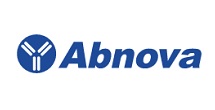UGT2A1 polyclonal antibody



* The price is valid only in USA. Please select country.
-
More Files
- More Functions
-
Specification
Product Description
Rabbit polyclonal antibody raised against recombinant UGT2A1.
Immunogen
Recombinant protein corresponding to amino acids of human UGT2A1.
Sequence
KEHNVTVLVASGALFITPTSNPSLTFEIYKVPFGKERIEGVIKDFVLTWLENRPSPSTIWRFYQEMAKVIKDFHMVSQEICDGVLKNQQLMAKLKKSKFEVLVSDPVFPCGDIVALKLGIPFMYS
Host
Rabbit
Reactivity
Human
Form
Liquid
Purification
Antigen affinity purification
Isotype
IgG
Recommend Usage
Immunohistochemistry (1:20 - 1:50)
The optimal working dilution should be determined by the end user.Storage Buffer
In PBS, pH 7.2, (40% glycerol, 0.02% sodium azide)
Storage Instruction
Store at 4°C. For long term storage store at -20°C.
Aliquot to avoid repeated freezing and thawing.Note
This product contains sodium azide: a POISONOUS AND HAZARDOUS SUBSTANCE which should be handled by trained staff only.
-
Applications
Immunohistochemistry (Formalin/PFA-fixed paraffin-embedded sections)
Immunohistochemical staining of human nasopharynx. -
Gene Info — UGT2A1
Entrez GeneID
10941Protein Accession#
Q9Y4X1Gene Name
UGT2A1
Gene Alias
-
Gene Description
UDP glucuronosyltransferase 2 family, polypeptide A1
Omim ID
604716Gene Ontology
HyperlinkGene Summary
The olfactory neuroepithelium, which lines the posterior nasal cavity, is exposed to a wide range of odorants and airborne toxic compounds. Odorants, which are mostly small lipophilic molecules, enter the mucus flow and reach the odorant receptors on sensory neurons. Odorant sensing is generally a transient process, requiring an effective signal termination, which could be provided by biotransformation of the odorant in the epithelial supporting cells. Xenobiotic-metabolizing enzymes in the olfactory epithelium have been suggested to catalyze inactivation and facilitate elimination of odorants.[supplied by OMIM
Other Designations
UDP glycosyltransferase 2 family, polypeptide A1
-
Pathway
- Androgen and estrogen metabolism
- Ascorbate and aldarate metabolism
- Drug metabolism - cytochrome P450
- Drug metabolism - other enzymes
- Metabolic pathways
- Metabolism of xenobiotics by cytochrome P450
- Pentose and glucuronate interconversions
- Porphyrin and chlorophyll metabolism
- Retinol metabolism
+ View More Disease
-
Disease
- +1-909-264-1399
+1-909-992-0619
Toll Free : +1-877-853-6098 - +1-909-992-3401
- sales@abnova.com









